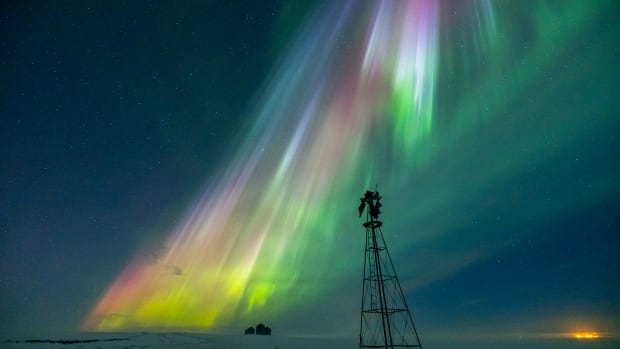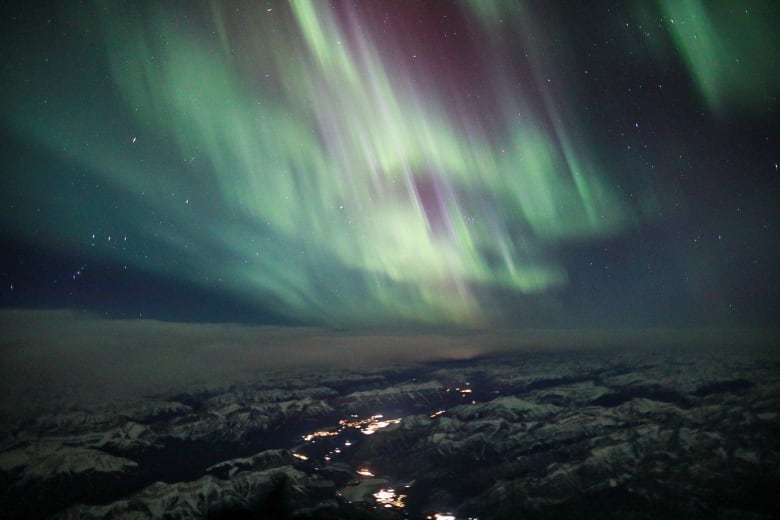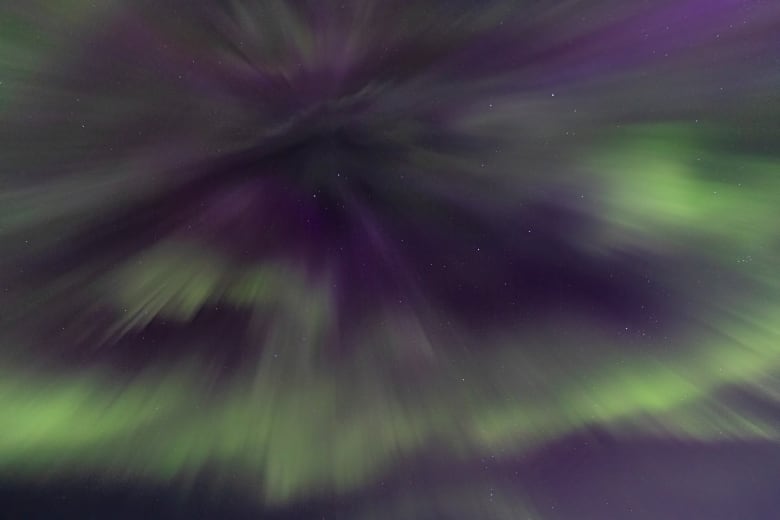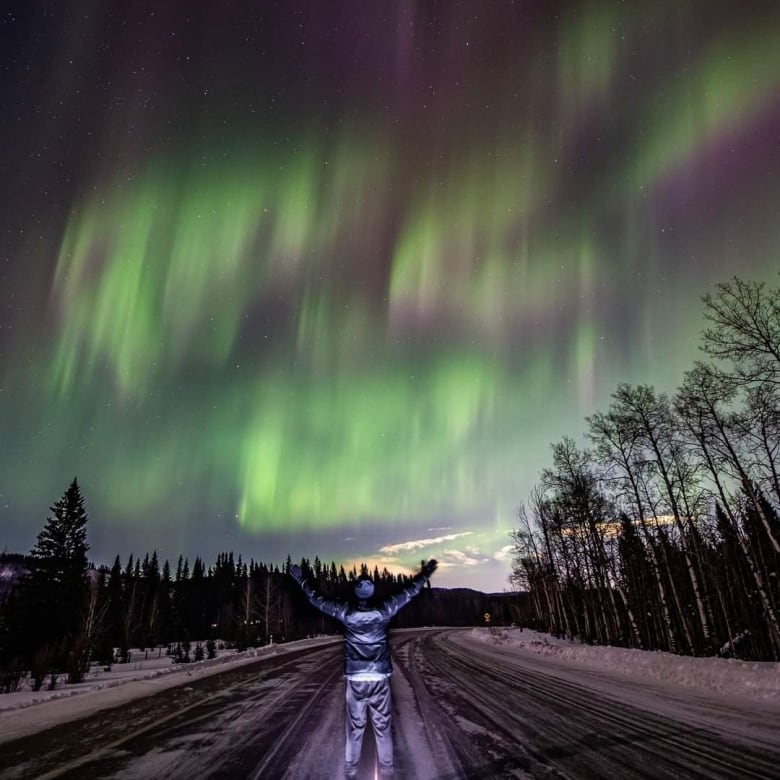
The Prairies Climate Change Project is a joint initiative between CBC Edmonton and CBC Saskatchewan that focuses on weather and our changing climate. Meteorologist Christy Climenhaga brings her expert voice to the conversation to help explain weather phenomena and climate change and how they impact everyday life.
The Northern lights lit up the sky across North America on Thursday, with sightings reported as far south as New Mexico.
It was yet another spectacular aurora display, in what has been a busy spring so far.
“It was just absolutely insane,” said Matt Melnyk, who has been photographing auroras for more than 15 years in southern Alberta.
He caught the most recent show.

“Different colours bursting with pillars and I got to see pinks, purples, reds, greens everything. It was pretty remarkable.”
Aurora forecasters say the most recent show was unexpected and stronger than most we’ve seen recently. Melnyk said it was a rare sight, especially for those further south.
Auroras are measured on a KP level index between one and nine. Thursday night hit level eight, which is extremely rare, Melnyk said.
Cathleen Mewis was also able to catch the show on Thursday night.
She photographs auroras near Saskatoon and is a part of the Saskatchewan Aurora Hunters Facebook page.
“I hummed and hawed, should I go out?” she said.
“I got in my car and I drove out and I had a spot in mind to go to a church and I didn’t even make it there because the sky just exploded,” she said.

Mewis said she was out early for aurora hunting on Thursday and was able to catch the lights at around 8:45 p.m. She said it was one of the best she’s seen yet.
“It was barely sunset and it was just crazy … reds and blues and it was just amazing,” she said.
Mewis said the aurora is worth getting out to see, even if it means leaving your warm house and getting out in the cold.
“People can’t understand the experience until you’re standing there watching it and it’s just … it’s just awe inspiring.”
Lots of lights lately
Aurora activity is tied to activity on the surface of the sun. When the sun releases solar flares and solar wind toward Earth it interacts with our magnetic field and atmosphere.
Those solar storms can cause a number of issues on earth. Strong solar storms can cause electrical failures and problems with GPS and communication, even satellite launch failures.
But active auroras are one of the more spectacular side-effects.
“That energy shows itself by shooting electrons down our magnetic field line,” said Bill Archer, a mission scientist with the Canadian Space Agency.
“It hits our atmosphere and it lights it up as if it were a neon light.”

The display on Thursday night was the product of an exceptionally strong geomagnetic storm — a disturbance of the Earth’s magnetic field.
And it’s just the beginning according to Archer. As the sun becomes more active, looking to peak in activity in 2025, he said that we could see some of the strongest storms in years.
“Right now we’re moving into a solar maximum, which means it’s more likely that things like that are going to happen,” he said
“Not only will we see more auroras, but the aurora that we see will be stronger.”
Our planet is changing. So is our journalism. This story is part of a CBC News initiative entitled “Our Changing Planet” to show and explain the effects of climate change. Keep up with the latest news on our Climate and Environment page.

